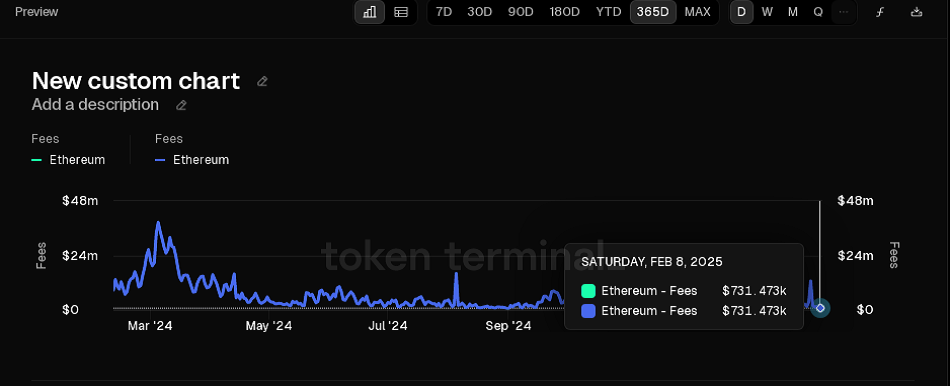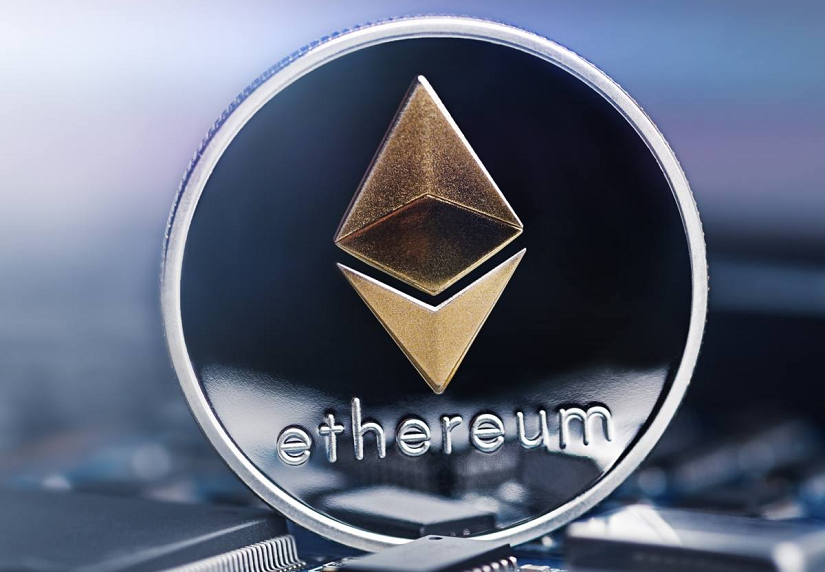TL;DR
- Ethereum’s daily transaction fees fell to $731,473 on Feb. 8, marking the first time in five months that fees dipped below $1 million, a level last seen in September 2024.
- Layer-2 networks like Arbitrum and Optimism are driving efficiency, reducing congestion on Ethereum’s mainchain but also shifting activity off it.
- Despite bearish indicators, accumulation addresses purchased 330,705 ETH ($833M) on Feb. 7, suggesting strong investor confidence in Ethereum’s long-term potential.
For the first time since September 2024, Ethereum’s daily transaction fees have dropped below $1 million, a milestone that has only occurred twice since November 2020. According to data from Token Terminal, Ethereum generated just $731,473 in fees on Feb. 8, signaling reduced network activity and possibly a transition toward more efficient blockchain solutions. This trend raises questions about the future of Ethereum’s fee structure and the broader impact on its economic model.
The Layer-2 Revolution: Blessing or Challenge?
Ethereum’s scaling strategy has long been centered on layer-2 networks such as Arbitrum, Optimism, and zkSync. These solutions significantly lower transaction costs by processing activity off-chain before settling on Ethereum’s mainnet. While this has successfully reduced congestion and high fees, it has also diverted transaction volume away from the base layer, leading to a decline in direct revenue for Ethereum validators.
However, Ethereum’s long-term outlook remains strong. The shift to layer-2s aligns with Ethereum’s vision of scalability and accessibility, making decentralized applications (dApps) more viable for everyday users. Moreover, these networks continue to grow, attracting more developers and projects to Ethereum’s ecosystem despite competition from Solana and Tron.
Another key concern is Ethereum’s rising supply. Since April 2024, the network has seen a reversal of its previously deflationary trend, largely due to lower on-chain activity. The London hard fork, which introduced ETH burning in 2021, is now less effective as fewer transactions mean fewer tokens are being burned. This shift has led some analysts to question whether Ethereum’s economic model needs adjustments to maintain its long-term scarcity appeal.

Despite these concerns, Ethereum’s investors remain confident. On Feb. 7, accumulation addresses acquired 330,705 ETH ($833 million), marking the largest single-day inflow ever recorded, according to CryptoQuant. This suggests that major players see the current dip as an opportunity rather than a warning sign.
In the face of challenges, Ethereum continues to evolve. Whether lower fees signal a problem or a step toward a more efficient network remains to be seen, but the crypto market’s confidence in Ethereum’s potential remains unwavering, particularly as it adapts to these changing dynamics.


